By Jay Landers
The architectural design of the Qianhai Prisma Towers project planned for the Chinese city of Shenzhen, in Guangdong Province, includes two “leaning” towers featuring openings that extend upward from the ground to create visually striking public spaces and terraced balconies.
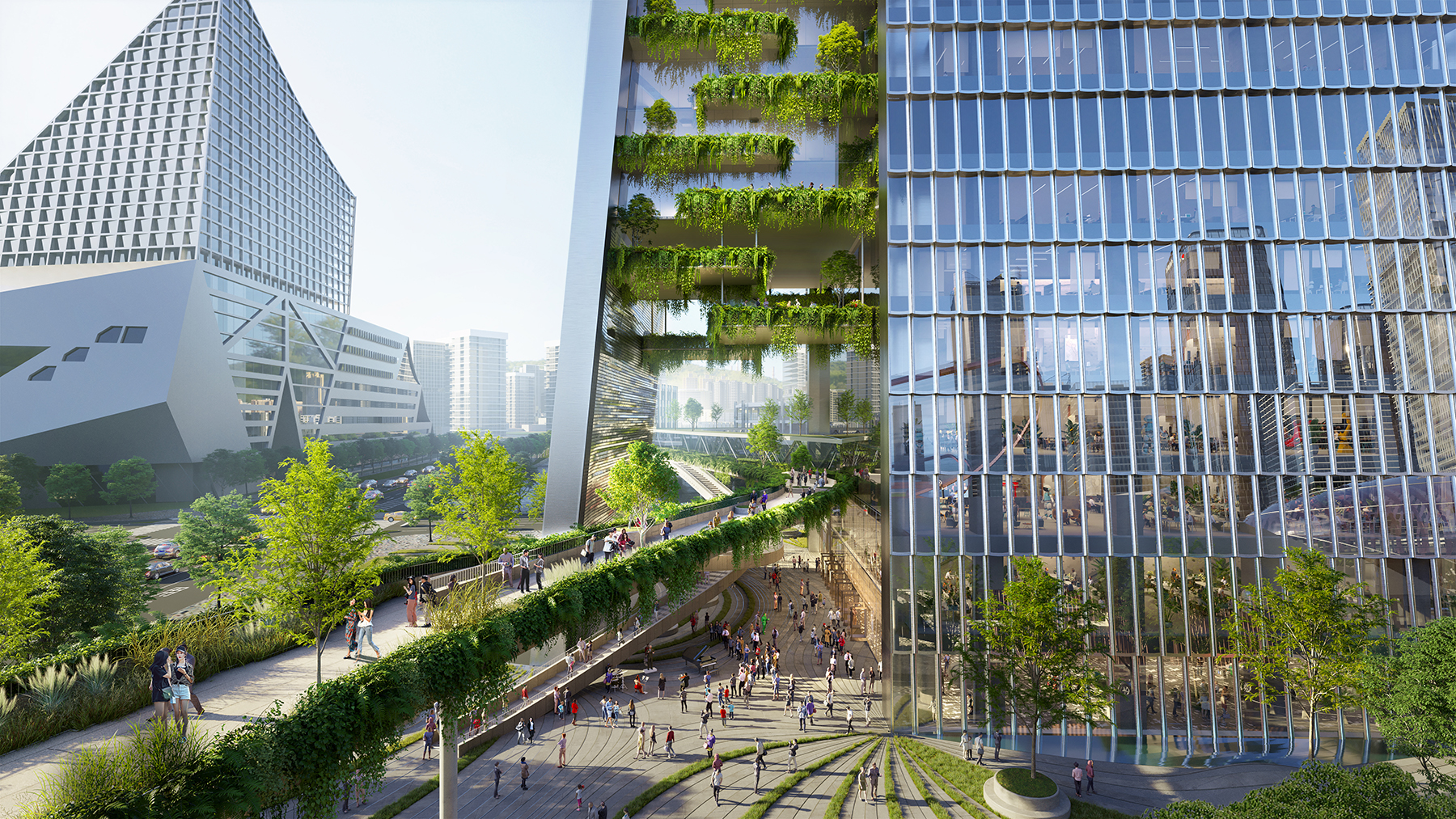
The design by the Bjarke Ingels Group, an architecture and planning firm commonly referred to as BIG, was recently selected by the project owner, Shenzhen Metro, which operates the city’s rapid transit system. Located beside an integrated regional transport hub, the 300 m tall residential tower and the 250 m tall office tower will flank either side of the area known as the Shenzhen Hong Kong Plaza.
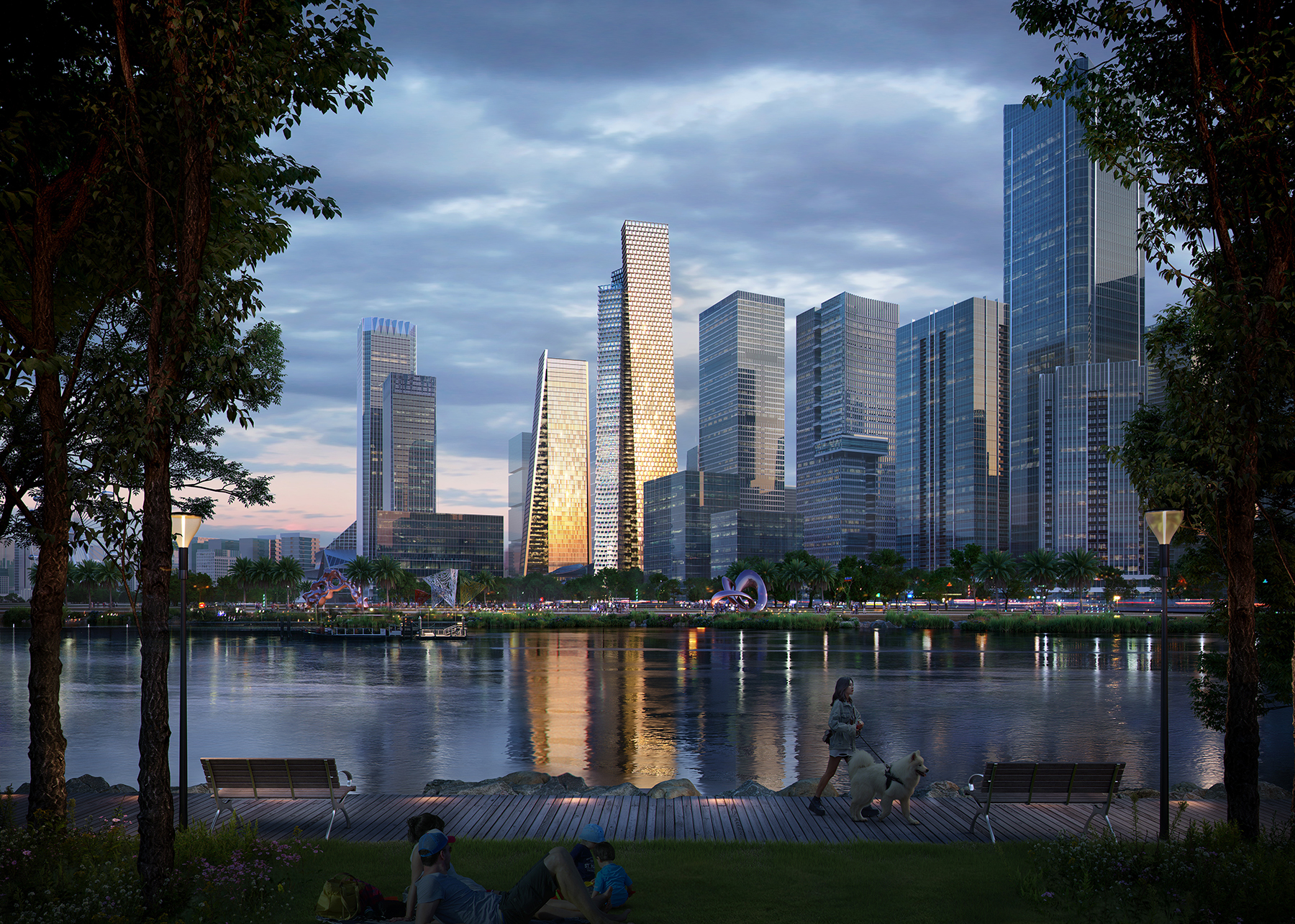
Both towers appear to “lean” as sections of the buildings taper toward the sky, adding structural efficiency while also creating space for balconies and ledges that will house lush vegetation, providing a contrast with the buildings’ glass facades. At ground level, the openings will afford some of the project’s more than 20,000 sq m of multilevel public space.
“Both towers are conceived as simple prismatic building envelopes split open to make room for public space on the ground where they stand,” said Bjarke Ingels, the founder and creative director of BIG, in a Feb. 9 news release issued by the firm. “The open seams and gaping corners allow the green spaces to ascend from the ground to the sky leaving wedges for outdoor gardens and terraces for the life of the people living and working within. With its timeless simplicity and inviting openness, the architecture of the two towers is firmly rooted in the urban values underpinning Shenzhen — a vertical modern city of 1,000 parks.”
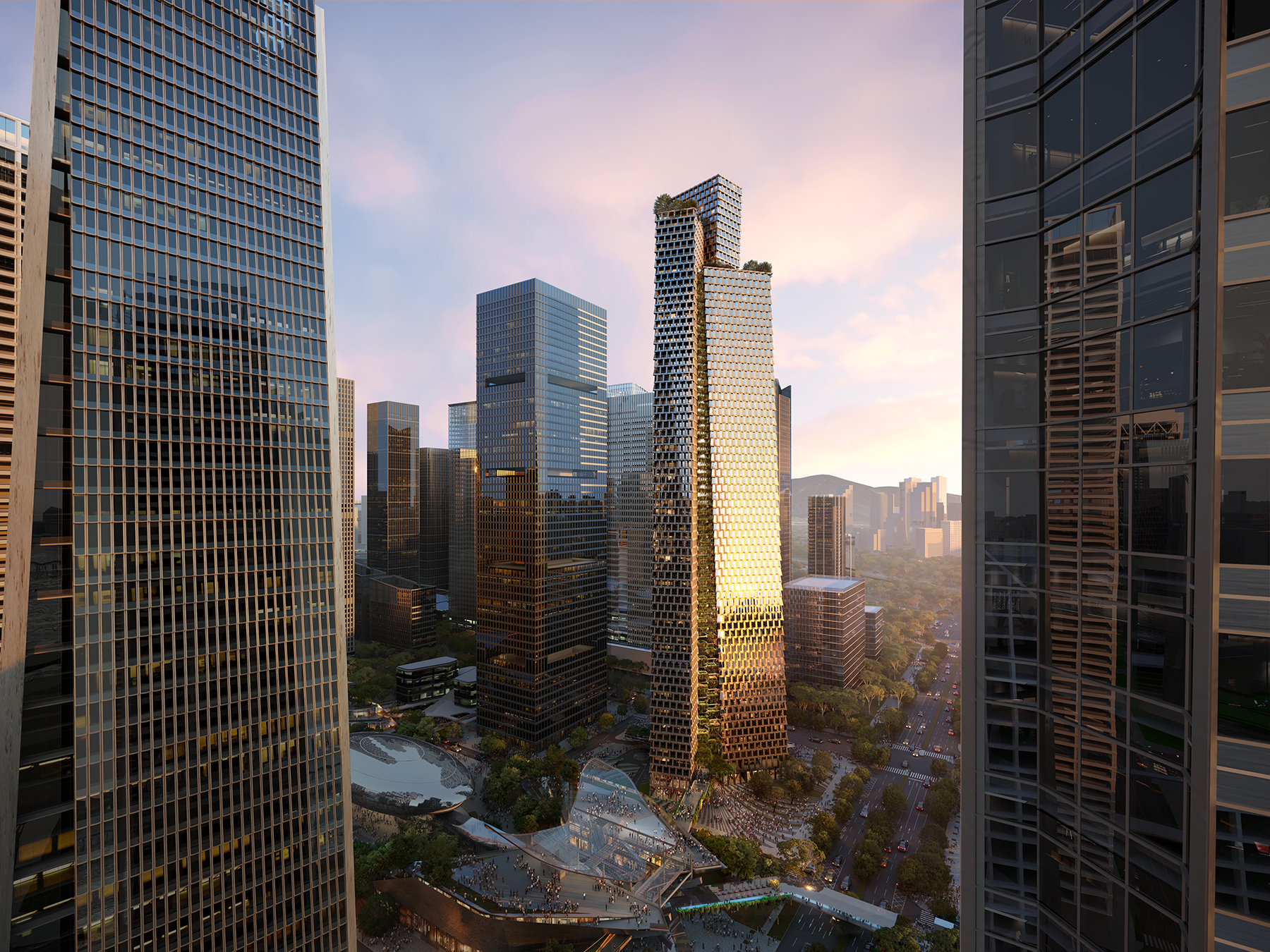
The 130,760 sq m residential tower features a tripod footprint comprising a “radial array of three rectangular volumes that step up at different heights,” according to BIG’s release. “Between the volumes, the envelope opens up to create a subtle crevice of green balconies, from the ground level to the roofs.” The roofscape and multiple terraces offer views of the city and Qianhai Bay.
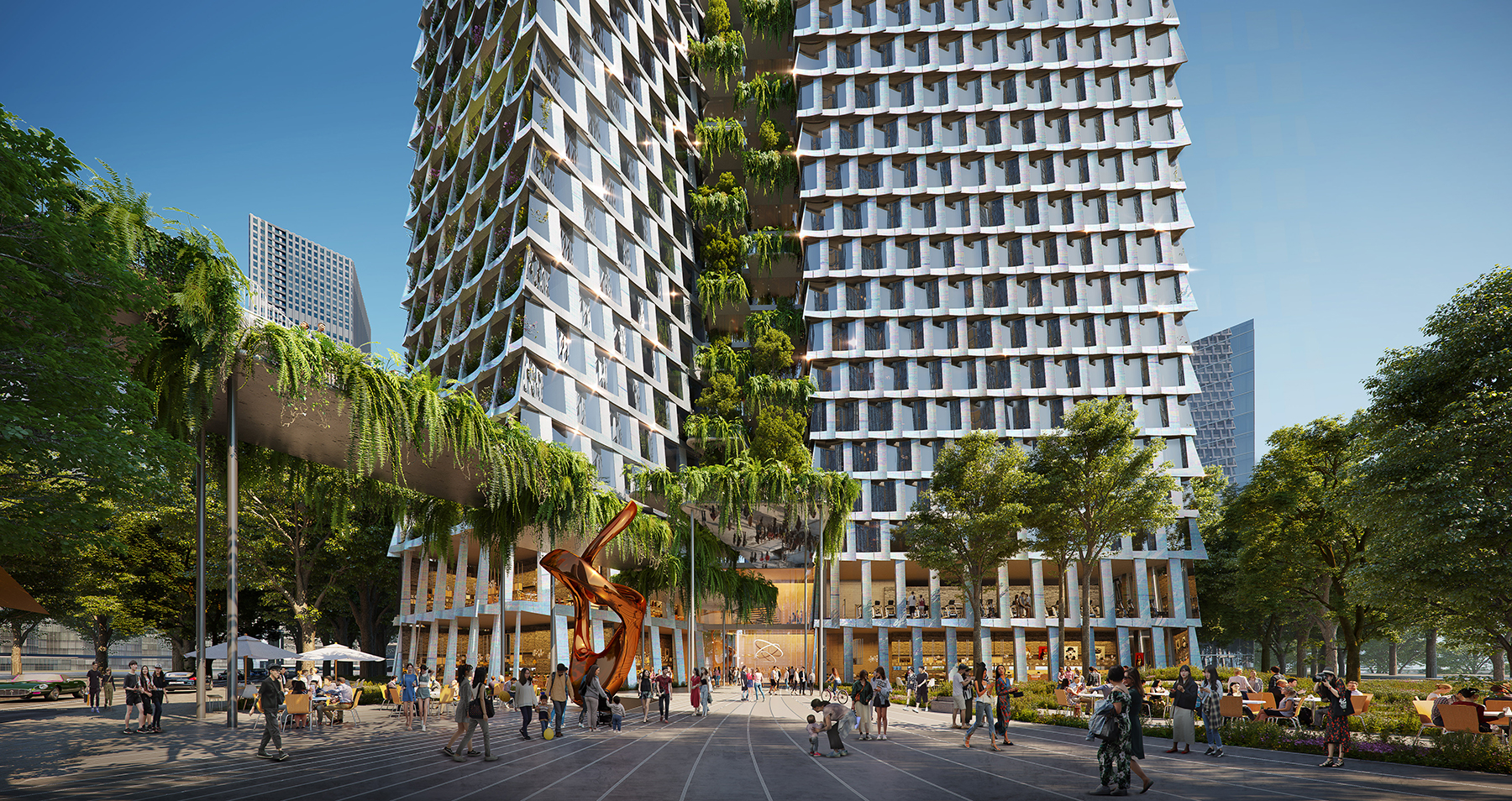
“As the tower footprints open to the ground, they celebrate the connectivity to the transit infrastructure, retail, and adjacent buildings,” said Martin Voelkle, BIG’s partner in charge, in the news release. “Pedestrian walkways connect multiple stories to provide seamless transitions between the towers and the surrounding public programs, forming a pedestrian network that leads up to the Qianhai Bay Waterfront Park.”
The public realm of the 110,697 sq m office tower includes an amphitheater, social spaces shaded by trees, and an under-porch bar. A pedestrian bridge network will link the two towers and span an adjacent roadway, facilitating access throughout the vicinity of the development. To provide shade and protection from rain, much of the pedestrian bridge network includes a canopy.
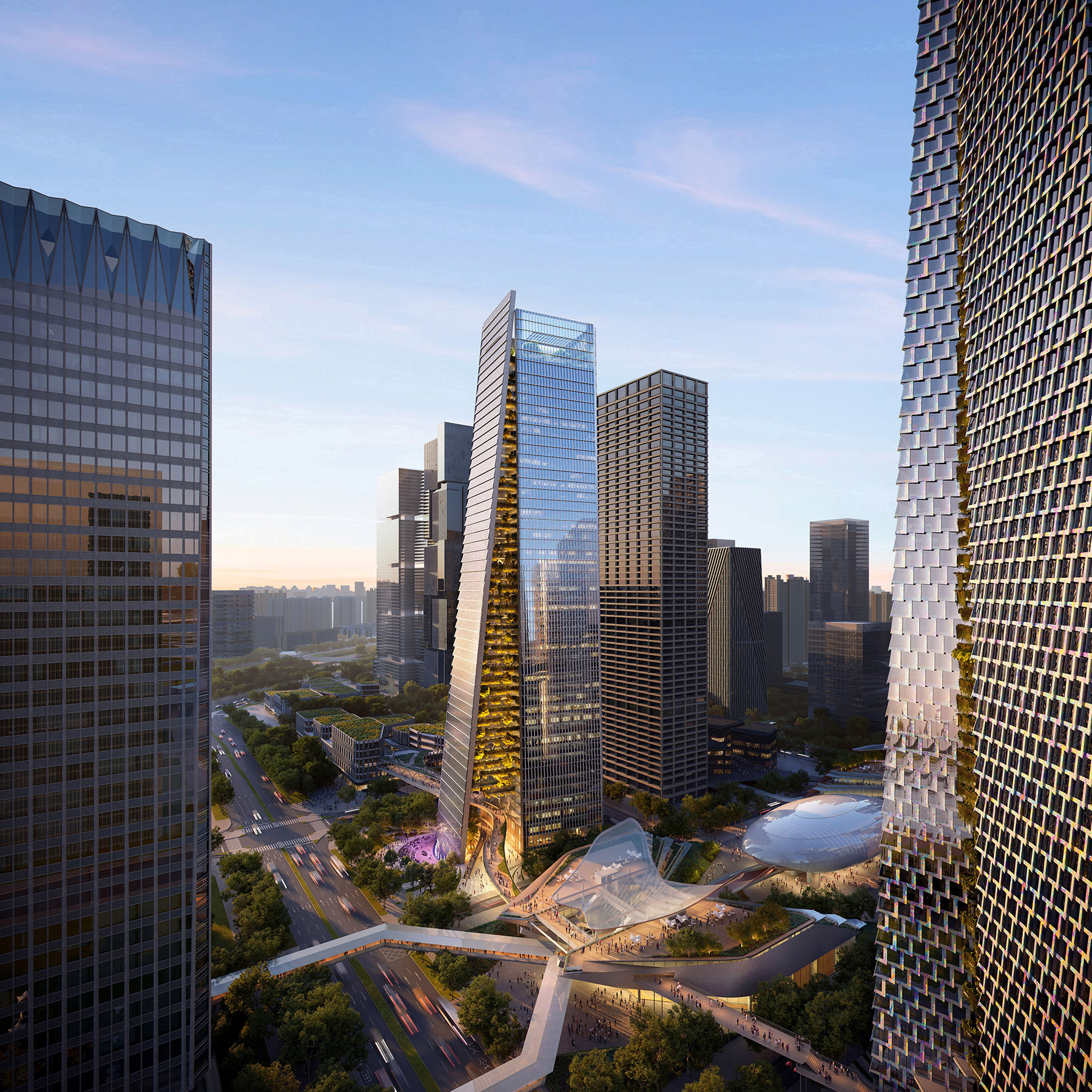
Among the sustainable features of the project, rainwater will be collected on-site and used for irrigation and maintenance of the public space. Photovoltaic cells will be integrated in the office tower’s west and east facade spandrels. For the most exposed orientation of the office tower, a double-skin closed-cavity facade will be used to improve thermal performance. In the residential tower, apartment units will have operable ventilation inlets incorporated within the window frames to enable natural ventilation.
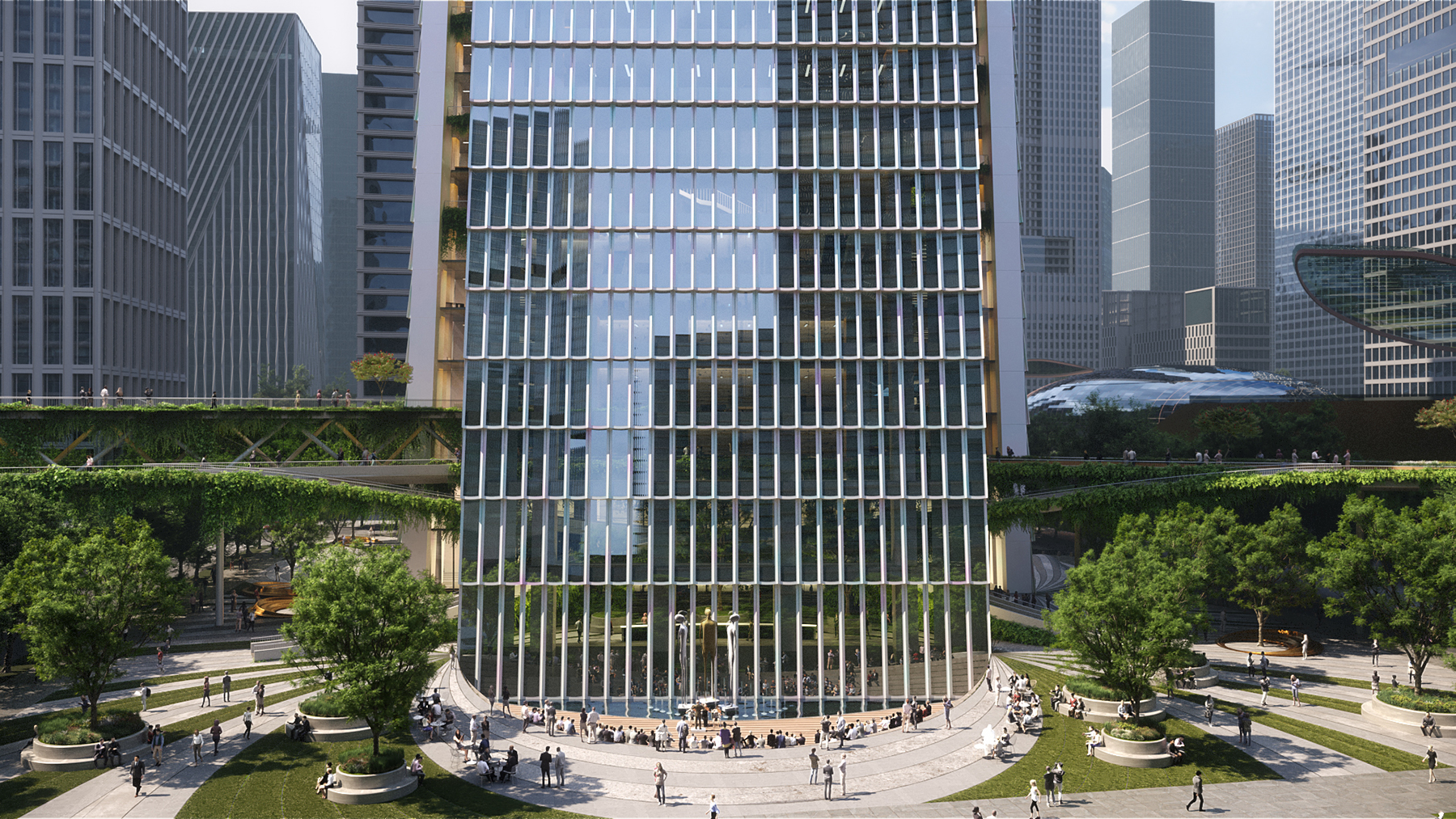
Construction is expected to begin on the project in 2025. China Architecture Design & Research Group is serving as the local architect and is responsible for mechanical, electrical, and plumbing.
Additional collaborators on the project include Thornton Tomasetti, which is providing structural engineering; Buro Happold, which is responsible for traffic, sustainability, and vertical transportation; and Arup, which is consulting on fire safety. RFR is responsible for facades and building maintenance units, while Turenscape is providing landscape services. Atchain created the project visuals, and RJ Models fashioned the physical model. Brandston Partnership Inc. is responsible for lighting design.
This article first appeared in Civil Engineering Online.



